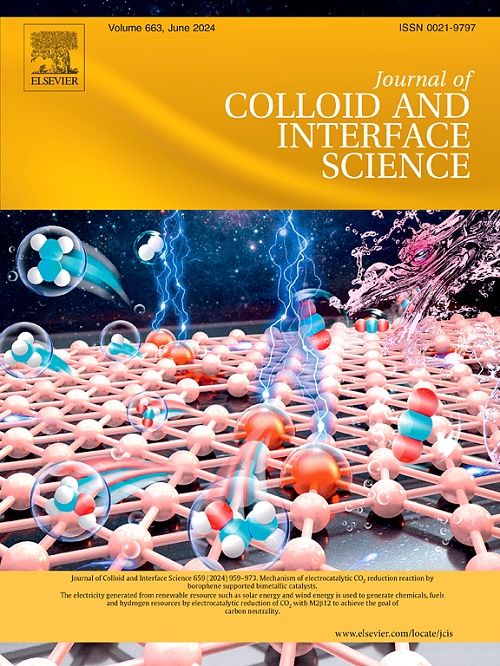Enhancing fog harvesting efficiency with a multi-object-coupled bio-inspired surface
IF 9.4
1区 化学
Q1 CHEMISTRY, PHYSICAL
引用次数: 0
Abstract
The global freshwater crisis poses a substantial threat to sustainable development, driving urgent demand for advanced atmospheric water harvesting technologies. While bio-inspired fog collectors have shown potential, conventional single-scale architectures often exhibit suboptimal performance due to inadequate coordination between droplet nucleation and transport. Here we present a multi-object-coupled venation-shaped patterned surface (MVSS) fabricated through laser-etching of filter paper/polydimethylsiloxane composite films. By synergistically integrating three bio-inspired mechanisms: (i) heterogeneous wettability patterns mimicking desert beetle elytra, (ii) conical spine arrays inspired by Opuntia histophysiology, and (iii) hierarchical venation networks derived from plant leaf, we establish a multi-stage phase-transition process that enhances fog harvesting efficiency through coordinated surface energy gradients and Laplace pressure modulation. The wettability contrast enables selective droplet nucleation, while the conical geometry generates asymmetric contact line pinning that drives directional transport. The hierarchical branching network minimizes hydraulic resistance through optimized flow path partitioning, achieving rapid drainage while suppressing edge water accumulation. This multi-scale synergy yields a record water collection rate of 1033 ± 28.2 mg cm−2 h−1. Our findings elucidate the critical role of structure–property coordination in fog water collection, providing a generalized design paradigm for developing high-efficiency atmospheric water harvesters. The fabrication strategy combining scalable laser processing with bio-composite materials suggests promising pathways for arid region deployment.

利用多目标耦合生物启发表面提高雾收集效率
全球淡水危机对可持续发展构成重大威胁,推动了对先进大气集水技术的迫切需求。虽然仿生雾收集器显示出潜力,但由于液滴成核和传输之间的协调不足,传统的单尺度结构往往表现出不理想的性能。在这里,我们提出了一种多物体耦合的脉状图案表面(MVSS)通过激光蚀刻滤纸/聚二甲基硅氧烷复合膜。通过协同整合三种生物启发机制:(i)模拟沙漠甲虫鞘翅的异质润湿性模式,(ii)受Opuntia组织生理学启发的锥形脊柱阵列,以及(iii)源自植物叶片的分层脉网,我们建立了一个多阶段的相变过程,通过协调表面能梯度和拉普拉斯压力调制来提高雾收集效率。润湿性的对比使液滴能够选择性成核,而锥形几何形状产生不对称的接触线钉住,从而驱动定向输送。分层分支网络通过优化流道分区,最大限度地减少水力阻力,实现快速排水,同时抑制边缘积水。这种多尺度协同作用产生了1033±28.2 mg cm−2 h−1的水收集率记录。我们的研究结果阐明了结构-性能协调在雾水收集中的关键作用,为开发高效的大气水收集器提供了一个通用的设计范例。将可扩展激光加工与生物复合材料相结合的制造策略为干旱地区的部署提供了有希望的途径。
本文章由计算机程序翻译,如有差异,请以英文原文为准。
求助全文
约1分钟内获得全文
求助全文
来源期刊
CiteScore
16.10
自引率
7.10%
发文量
2568
审稿时长
2 months
期刊介绍:
The Journal of Colloid and Interface Science publishes original research findings on the fundamental principles of colloid and interface science, as well as innovative applications in various fields. The criteria for publication include impact, quality, novelty, and originality.
Emphasis:
The journal emphasizes fundamental scientific innovation within the following categories:
A.Colloidal Materials and Nanomaterials
B.Soft Colloidal and Self-Assembly Systems
C.Adsorption, Catalysis, and Electrochemistry
D.Interfacial Processes, Capillarity, and Wetting
E.Biomaterials and Nanomedicine
F.Energy Conversion and Storage, and Environmental Technologies

 求助内容:
求助内容: 应助结果提醒方式:
应助结果提醒方式:


